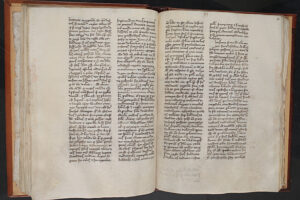WHAT RELATION DOES THE PROJECT HAVE TO THE LEGAL SCIENCES?
Starting with the discovery of the stone sarcophagus and the skeleton inside it – which, to all appearances, is that of the Templar Grand Master Arnau de Torroja – in the monastery to the church of San Fermo (Verona, Italy), the question arises as to the ownership of the human remains in particular. The exact location would suggest the ownership of the Order “Templari Cattolici d’Italia”, since the monastery, immediately adjacent to the church of San Fermo, belongs to this Order of Knights Templar. Once the monastery was also owned by the Archdiocese of Verona, while the church of San Fermo still counts as such.
The municipality of Verona, however, argues that the skeleton is its property because it is a historical find and in this context relies on the Italian law on the protection of monuments “Codice dei beni culturali. Decreto legislativo” of 22 January 2004, no. 42.
Arnau de Torroja was Grand Master of the Order of the Knights Templar from 1179 until his death in 1184, and he came from Catalonia, from one of the most important noble families of the time. Therefore, the Catalan interest in recovering the bones of a national hero is not exactly small.
In addition, other legal issues arise in connection with the project. As the history books show, the Order was dissolved by Pope Clement V in 1312. This decision was preceded by cruel and bloody “Templar trials” initiated by the French king Philip IV. The charges against the order included heresy and blasphemy. Many Templars were forced to confess under torture or even burned alive.
In the course of research, old documents have now been rediscovered that call into question the legality of this dissolution by Pope Clement V. The recently published “The Rediscovered Bulls of Pope Clement IV and the Dissolution of the Order of the Knights Templar” deals primarily with four papal bulls of Pope Clement IV, which make Pope Clement V’s decision appear extremely questionable in (ecclesiastical) legal terms.
Trials conducted just like the “witch trials”, even if these members of the order were in fact monks? How much value did a confession have after long torture?
These and those questions about ownership are the exciting legal issues that need to be addressed.





